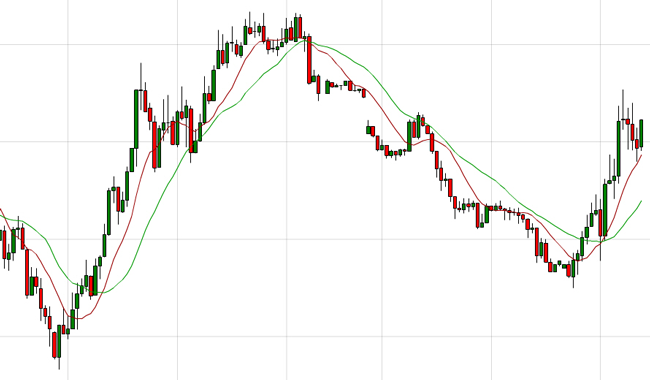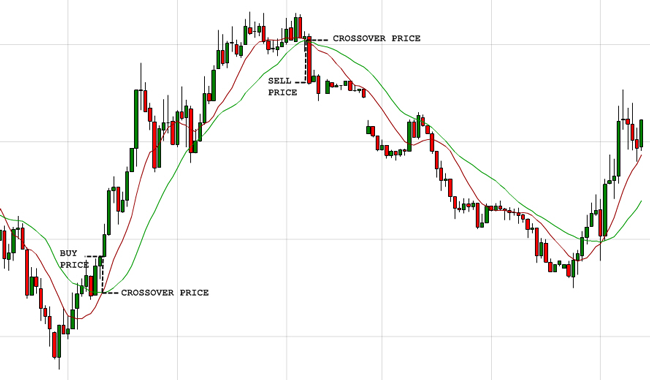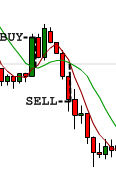Are you an average spread bettor?
Nov 16, 2011 at 7:02 pm in Technical Analysis by
When I ask the question ‘Are you an average spread bettor’, I don’t mean are you like the majority of spread bettors… who lose money. And I don’t mean are you winning some, losing some, and just about staying level.
What I really mean is, do you use moving averages in your trading routine — as triggers for when to buy long and sell short? When it comes to moving average crossovers in particular, the evidence is pretty compelling, as you can see from the following chart. If you bought this financial instrument when the shorter moving average (red line) crossed upwards through the longer moving average (green line), and sold short when the red line crossed downwards through the green line, you’d be quids-in.

With my devil’s advocate hat on, I’d like to point out that you wouldn’t be quite as much “quids-in” as at first you thought. It’s tempting to think you would be buying and selling at the crossover prices themselves, but, when a crossover occurs, the actual buying or selling price may be somewhat different as illustrated below.

With this in mind, you wouldn’t have made quite as much money as you had hoped but you’re still quids-in.
Now consider the following chart fragment that shows how a hypothetical spread bettor bought on an upwards crossover (at a disadvantageous price) and the sold on a downwards crossover (at another disadvantageous price). The end result is that he (it’s usually a man) bought high and sold low which is exactly the opposite of what he should be doing.

This chart was actually a fragment of the previous one — can you spot it? — overlaid with a different combination of moving averages; which serves to illustrate the additional problem of: which moving average periods to choose for your crossover signals.
Conclusion
I have deliberately obscured the details here of which financial instrument is being charted and which combinations of moving averages have been chosen in both cases. My aim was to show how it is all-too-easy to demonstrate how the use of moving averages is a sure-fire route to riches, or alternatively a fool’s road to the poor house.
You will have guessed that I’m rather skeptical. Not a total non-believer, you understand, but also not overly seduced by the panacea power of moving averages. They might work, and they might not, and the devil (of course) is in the detail.
Tony Loton is private trader, and author of the book “Stop Orders” published by Harriman House.

